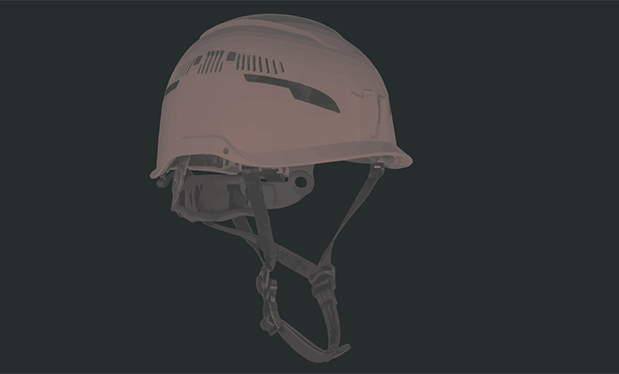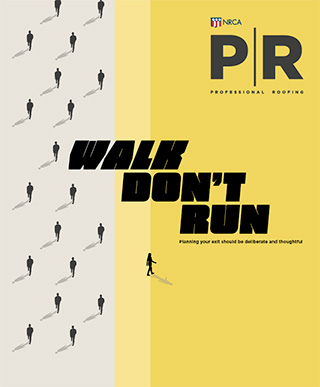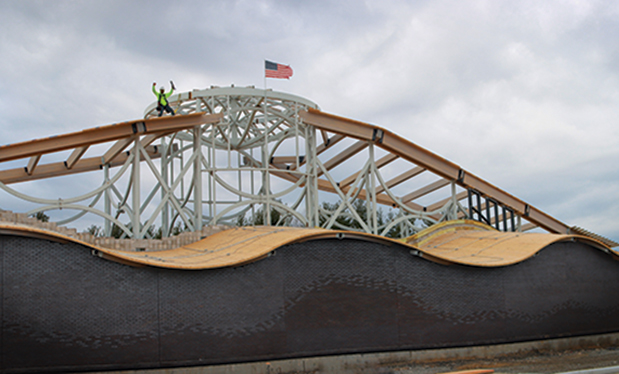
Roofing is a dangerous job that requires proper safety equipment to protect workers from potential hazards. One essential piece of safety gear for all roofing workers is head protection.
According to CPWR—The Center for Construction Research and Training, in 2018, nearly 8,000 construction workers suffered head injuries, and 230 died from their injuries. These types of injuries can be reduced with the use of appropriate head protection.
Although there are many types of head protection, there has been a new focus in the safety industry toward the use of ANSI-rated Type II helmets as an alternative to traditional hard hats.
What is a Type II helmet?
ANSI Z89.1-2014, “American National Standard for Industrial Head Protection,” created standards for protective headwear that assess the impact properties of helmets. ANSI-rated Type I hard hats meet standards for impacts to the top of the head. However, Type II helmets must meet standards for impacts to the top, front, back and sides of the head.
Although roofing workers frequently encounter overhead hazards, they also face substantial risks from impacts on the sides, rear and front of the head. In the roofing industry, most traditional forms of head protection used by workers only hold a Type I ANSI rating, potentially leaving workers exposed to other impacts, such as flying debris from mechanical roofing equipment.
Although Type II helmets were designed to provide superior protection and comfort for workers in high-risk environments, such as construction sites and roofing projects, there have been some studies that have shown this may not always be the case.
A study by the Legacy Research Institute’s Legacy Biomechanics Laboratory, Portland, Ore., identified not all safety helmets are created equally and protect workers from side impacts. Researchers concluded workers seeking the best head protection should look to select Type II helmets with chin straps. Researchers also suggest switching workers to Type I safety helmets instead of Type II hard hats or helmets with chin straps will likely expose them to a higher risk of head injury from lateral impacts. Be careful when selecting any piece of personal protective equipment and conduct a comprehensive, analytical process when choosing what is right for your workers.
Is the Occupational Safety and Health Administration saying hard hats no longer are acceptable? The short answer is: “No.” Traditional Type I hard hats have been a long-standing staple in the roofing industry, serving as the standard for head protection for many years. Although these hard hats offer practical utility, OSHA recently determined the advantages of modern safety helmets offer an alternative to elevate the overall safety of employees.
In a December 2023 press release, OSHA recommends safety helmets be used by workers in construction industries, the oil and gas industry, in high-temperature specialized work and some low-risk environments. OSHA also recommends safety helmets be used when performing electrical work (which would require a helmet that is rated specifically for working around electricity), working from heights and when required by regulations or industry standards.
Although there is no formal regulatory requirement, the alarming head-injury statistics in the construction industry serve as a compelling argument for wider adoption of helmets. Based on data from the Bureau of Labor Statistics, OSHA reports nearly 6% of all nonfatal injuries are a result of head injuries, a majority of which were caused by slips, trips and falls.
How do I choose the right one?
Before selecting a headwear type, you should evaluate potential exposures a worker may face. OSHA regulations state an employer must:
- Perform a “hazard assessment” of the workplace to identify and control physical and health hazards
- Identify and provide appropriate PPE based on the assessment
- Train regarding the use and care of PPE
- Maintain PPE in a usable condition, including replacing worn or damaged PPE and understanding the equipment’s useful life
- Periodically review the program for effectiveness of the overall PPE program
As with any piece of PPE, users must be trained regarding how the equipment works. Because of the nature of roofing work, Type II helmets can be used as an alternative to traditional Type II hard hats, which are equivalent to Type I hard hats but with added chin straps.
A Type II helmet with a secure chin strap and adjustable suspension system can offer protection if a worker’s personal fall-protection system arrests a fall during which his or her head may not be protected.
Additionally, most Type II helmets are designed to provide better ventilation and airflow, which is essential for roofing workers who work in hot, humid conditions. Proper ventilation helps prevent discomfort and heat-related illness such as heat exhaustion or heat stroke. A feature of both Type I hard hats and Type II helmets is their compatibility with additional safety accessories, such as face shields, ear protectors and communication devices. Roofing workers often need to communicate with their team members or use specific tools while working on a roof, and either a Type I hard hat or a Type II helmet with the ability to add accessories can enhance safety and efficiency on the job.
Type II safety helmets are designed to provide protection against impacts, penetrations and, often, electrical hazards, but there is not a one-size-fits-all mentality. It is a piece of equipment that should and must be tailored to each worker’s task. To select the proper Type II safety helmet, you should consider material selection, design features, fit and adjustability.
Material selection
The materials used in the construction of a Type II safety helmet play a critical role in its protective capabilities. The outer shell of the helmet typically is made of high-impact-resistant materials such as acrylonitrile butadiene styrene or polycarbonate. These materials are lightweight yet durable, providing excellent protection against impacts.
For the inner lining of the helmet, shock-absorbing materials such as foam or padding are commonly used. These materials help absorb and distribute the force of an impact, reducing the risk of head injuries, and are something not typically found in Type I hard hats.
In addition, Type II safety helmets designed to protect against electrical hazards are made from nonconductive materials such as fiberglass or plastic. These materials prevent electric shock by insulating the wearer from live wires or electrical equipment.
Design features
The design of a Type II safety helmet also plays a crucial role in its protective capabilities. Helmets should have a secure chin strap to ensure a snug fit and prevent the helmet from coming off during an impact when worn properly. Ventilation slots are essential to prevent overheating and discomfort for the wearer, especially in hot and humid work environments.
Some Type II safety helmets come with additional features such as a visor or earmuffs for added protection against flying debris, dust or loud noises. These features can enhance the overall safety and comfort of the wearer in hazardous work environments.
Fit and adjustability
A properly fitting Type II safety helmet is essential for maximum protection. Helmets that are too loose or tight can compromise their effectiveness when preventing head injuries. It is important to choose a helmet size that fits snugly on the head without causing discomfort or restricting movement.
Many Type II safety helmets come with adjustable straps or ratchet systems to allow for a customized fit. It is crucial to adjust the helmet properly to ensure it sits securely on the head and does not shift during work activities.
What about cost?
One of the biggest drawbacks of modern safety helmets is cost. Although costs vary among manufacturers, safety helmets often come with heftier price tags than traditional Type I hard hats.
However, this price difference should be viewed as an investment in worker safety and well-being. Type II safety helmets not only offer more protection but they also have the life spans of modern safety helmets that may help justify their cost. Most modern helmets have a life span that is two to three times longer than traditional hard hats when cared for appropriately and properly.
Which is right for you?
Head protection is an essential piece of safety gear for roofing workers and should include superior impact protection, ventilation and compatibility with additional safety accessories. Investing in high-quality head protection, whether a hard hat or helmet, can help roofing workers stay safe and comfortable while working at heights and reduce the risk of head injuries on job sites.
It is important to prioritize employee safety and choose the right head protection that meets their needs and requirements. Ultimately, until regulatory changes are introduced, the choice is yours to make.
Whether your organization is in the process of evaluating head protection practices or looking to start, NRCA can help. If you have questions regarding this topic or other safety topics, please contact Rich Trewyn, NRCA’s director of risk education and training, at rtrewyn@nrca.net.
RICH TREWYN is NRCA’s director of risk education and training.



